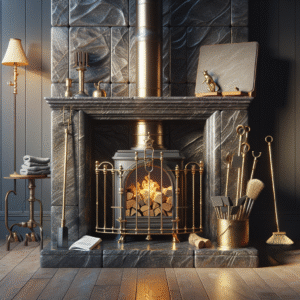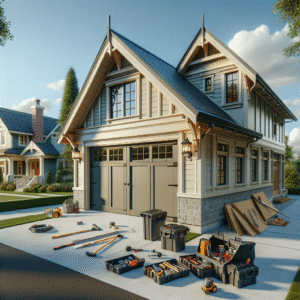Are you in the market for a new water heater? Choosing the right water heater is crucial not only for ensuring a steady supply of hot water but also for optimizing energy efficiency and reducing costs in your home. Whether you’re replacing an old model or installing one for the first time, understanding the different types of water heaters and the factors affecting their size and efficiency is essential. In this detailed guide, we’ll walk you through selecting the perfect water heater, provide a step-by-step installation guide, and share valuable maintenance tips to keep your unit running smoothly. Perfect for homeowners, DIY enthusiasts, and anyone looking to make an informed decision, this guide aims to light up your water heater knowledge!
1. Choosing the Right Water Heater: Types and Size Considerations
When it comes to selecting a water heater, the variety can be overwhelming. From traditional tank units to modern tankless options, each type has its benefits and ideal use cases. Key factors such as the size of your home, number of family members, and your typical water usage patterns play pivotal roles in deciding the best fit for your needs. We’ll help you navigate through these choices to find a water heater that suits your lifestyle and budget.
2. Step-by-Step Installation Guide for Your New Water Heater
Installing a new water heater can seem daunting, but with the right tools and guidance, it’s a manageable task for those who prefer the DIY route. However, depending on your comfort level with home improvement projects, you might consider professional installation to ensure safety and efficiency. Our guide will cover both scenarios, providing you with clear, easy-to-follow steps whether you’re going it alone or overseeing the work of a local contractor.
3. Maintenance Tips: Ensuring Longevity and Efficiency After Installation
Once your new water heater is up and running, regular maintenance is key to prolonging its lifespan and maintaining its efficiency. Simple routines like checking the pressure relief valve, flushing the tank to remove sediment buildup, and inspecting the anode rod can save you from future headaches. We’ll share these tips and more to help you get the most out of your investment.
Now, let’s dive into the specifics of how to choose, install, and maintain your water heater, ensuring you enjoy hot water year-round without a hitch!
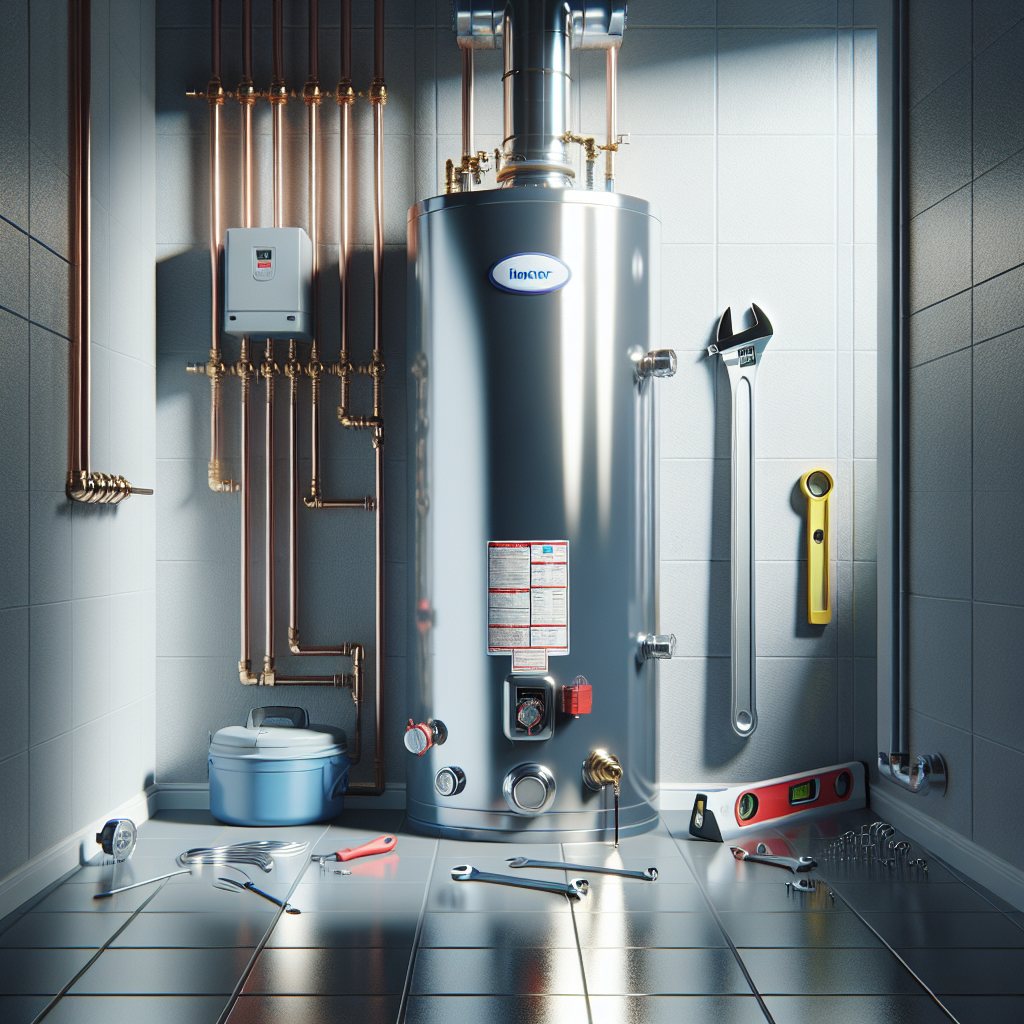
If you’re ready to take your home improvement or construction project to the next level, we can help! Find trusted contractors on BuildNet, whether you’re looking for renovations, new builds, electrical work, plumbing, or anything in between. Our directory connects you with qualified professionals who can make your vision a reality.
Choosing the Right Water Heater: Types and Size Considerations
Hey there! If you’re on a quest to find the perfect water heater for your home, you’ve come to the right place. Whether it’s about saving on those utility bills, ensuring you never run out of hot water during a shower, or making an eco-friendly choice, understanding the different types of water heaters and determining the right size can be a game-changer. So, let’s dive in and help you make an informed decision that suits your household needs and preferences!
Understanding Different Types of Water Heaters
First things first, let’s explore the various types of water heaters available on the market. Each type offers unique benefits, and knowing these can help you narrow down your choices significantly.
1. Conventional Storage Tank Water Heater
The most common type you’ll find in many homes is the conventional storage tank water heater. It consists of an insulated tank where water is heated and stored until needed. These are usually powered by gas or electricity. If you’re looking for a straightforward, cost-effective solution and have the space, this might be your go-to option.
2. Tankless Water Heater (On-Demand)
If you’re all about efficiency, a tankless water heater could be up your alley. These heaters directly heat water on demand as it flows through the device, which means no standby energy losses associated with storage tanks. They’re great for homes with limited space and can significantly reduce your energy bill, though they come with a higher initial investment.
3. Heat Pump Water Heater (Hybrid Water Heater)
Moving towards more sustainable solutions, heat pump water heaters are worth considering. They use electricity to move heat from the air or ground to heat the water, rather than generating heat directly. This makes them up to three times more energy efficient than conventional electric water heaters.
4. Solar Water Heaters
With a focus on renewable energy, solar water heaters use the sun’s energy to heat water, which is then stored in an insulated tank. Although the upfront cost can be significant, the reduction in energy bills can be substantial, especially in regions with plentiful sunshine.
Choosing the Right Size: Not Too Big, Not Too Small!
Now that you’re familiar with the types of water heaters, let’s talk about sizing. Choosing the correct size is crucial for ensuring that you have enough hot water without wasting energy.
1. For Tank Water Heaters
When considering tank water heaters, think about the number of people in your household and your peak water usage. Here’s a rough guide to help you out:
- 1-2 people: 30-40 gallons
- 2-3 people: 40-50 gallons
- 3-4 people: 50-60 gallons
- 5+ people: 60-80 gallons
2. For Tankless Water Heaters
When it comes to tankless water heaters, the focus shifts from capacity to flow rate, which is measured in gallons per minute (GPM). You’ll need to calculate the flow rates of the appliances and fixtures you expect to use simultaneously to determine the ideal GPM. For example, a shower might use 2.5 GPM, while a washing machine might use 3 GPM. Adding these up will give you the GPM requirement for your water heater.
Local Insights: Why It Matters
If you’re living in areas with extreme weather conditions, your choice might lean towards models designed specifically for such environments. For instance, in colder regions, tankless systems might need to be indoor installed to prevent freezing issues.
Moreover, local availability of energy sources – be it gas, electricity, or solar – can also influence your decision. It’s always a good idea to consult with local experts and contractors who can provide insights specific to your area. Not only does this ensure that you’re making a choice that’s efficient, but it also helps in supporting local businesses.
Finally, local regulations might dictate certain efficiency standards and installation specifications. It’s a great idea to do a quick check or chat with your local building department or a knowledgeable local contractor to ensure compliance.
Choosing the right water heater is all about balancing your needs with what’s available. By understanding the different types and sizes, you can make a choice that not only provides comfort but is also kind to your wallet and the environment. Remember, when in doubt, reaching out to a local expert can provide you with tailored advice that makes all the difference!
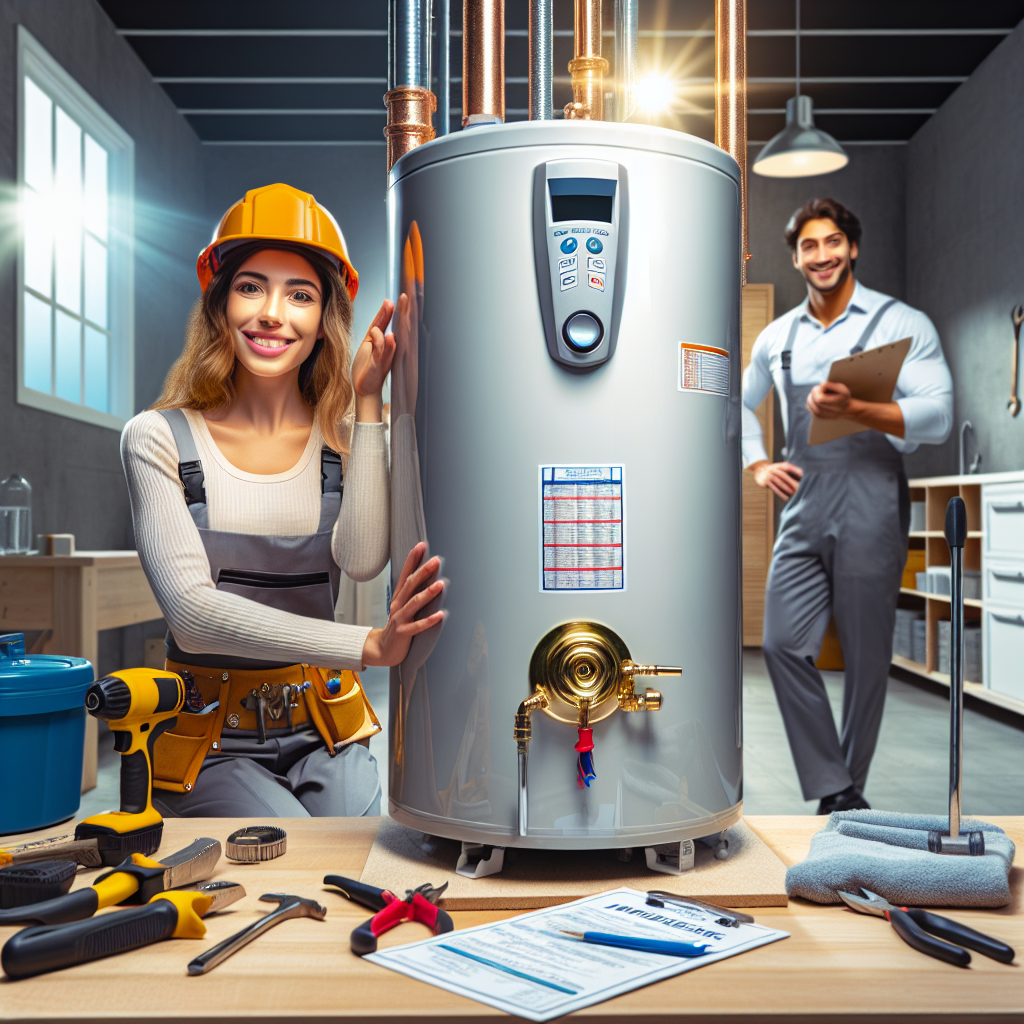
Step-by-Step Installation Guide for Your New Water Heater
Hey there! Installing a new water heater can be a daunting task, but with the right guidance, it’s totally doable. Whether you’re a DIY enthusiast or considering rolling up your sleeves for the first time, I’m here to walk you through each step. By the end, you’ll feel like a pro, ready to enjoy that hot shower or steamy bath in no time!
Preparation: Getting Started
Before diving into the thick of things, let’s ensure you have everything you need. Here’s a quick checklist:
- Tools Required: Adjustable wrench, screwdrivers, pliers, tape measure, and a pipe wrench.
- Materials Needed: Your new water heater, discharge pipe, fittings, tubing, insulation, and possibly a new thermostat.
- Safety Gear: Work gloves, goggles, and closed-toe shoes.
Once you’ve gathered your tools and materials, make sure to turn off all power related to the heater at your breaker box to prevent any electrical accidents.
Step 1: Remove the Old Water Heater
First thing’s first, you’ll need to remove your old water heater. Start by cutting off the water supply and draining the existing tank. Connect a garden hose to the drain valve located at the bottom of the tank and direct the water to a suitable drain. Open the pressure relief valve to speed up the draining process.
Disconnecting
Once drained, disconnect the water heater from the water supply lines and the power source (gas or electricity). For electric heaters, you should disconnect the electrical wires. For gas heaters, make sure the gas is completely shut off before disconnecting the gas line using a pipe wrench.
Step 2: Position the New Water Heater
With the old unit out, it’s time to position your new water heater. Place your new unit in such a way that all connections for power and water are easily accessible. Ensure that it’s perfectly level by adjusting the legs or placing shims under its base.
Step 3: Install the Discharge Pipe
Attach the discharge pipe to the pressure relief valve. This is an important safety feature that will help handle any excess pressure. If your new model doesn’t come with one, you can usually use the old pipe if it’s in good condition. Make sure the discharge pipe leads to a drain or outside your home to avoid any potential water damage.
Step 4: Connect to Water Supply
Depending on your type of water heater (tank or tankless), the connections might vary. You generally need to connect both the hot and cold water lines using either flexible hoses or copper tubing. Ensure all fittings are secure and there are no leaks.
Applying Sealant
Use plumber’s tape or joint compound on the threads of the water connections to ensure a watertight seal. This simple step can prevent future headaches caused by leaks.
Step 5: Connect to Power Source
For electric water heaters, connect the wires to the corresponding wires in the power supply using wire nuts. For gas water heaters, you’ll need to connect the gas line back to the unit. Make sure to check for any gas leaks by applying a soap solution to the gas line connections and watching for bubbles.
Final Setup
Finally, turn the power and the water back on. For electric heaters, switch the circuit breaker to the on position. For gas heaters, light the pilot according to the manufacturer’s instructions.
Step 6: Check for Leaks and Test
Once everything is hooked up, check all connections for leaks. Open the faucets in your home to let the air escape from the system and keep an eye on the water heater for any signs of leakage.
Allow the water to reach the set temperature, then test by turning on a hot water tap to see if it’s working correctly. Adjust the thermostat settings if needed.
And just like that, you’ve installed your new water heater! Remember, if at any point things get too tricky, don’t hesitate to call in a professional. After all, ensuring the job is done safely and effectively is the top priority. Congratulations on upgrading your home’s comfort level and tackling a major appliance installation!
Maintenance Tips: Ensuring Longevity and Efficiency After Installation
Hey there, savvy homeowner! Just rolled out the red carpet for your brand-new water heater, huh? Well, the spotlight’s just beginning to shine. Keeping that water heater in tip-top shape isn’t just about avoiding cold showers (though that’s a big perk); it’s about maximizing efficiency, extending its life, and keeping those energy bills down. Let’s dive into some essential maintenance tips that will keep your water heater running smoothly.
Regular Check-Ups
Think of your water heater like a car; it needs regular check-ups to perform its best. Here’s a little maintenance calendar to help you keep track:
- Monthly: Check around the area for any signs of leaks or rust. A small drip can turn into a costly problem!
- Annually: Schedule a professional inspection. They’ll handle the heavy lifting like checking the pressure relief valve and anode rod, which can be a bit more technical but are crucial for a healthy water heater.
Anode Rod – The Unsung Hero
Ever heard of an anode rod? It’s the secret weapon against rust and corrosion inside your water heater. This little rod sacrifices itself to save the tank and should be checked every three years (more often if you have hard water). If it’s been significantly worn down, replace it to keep the internal parts of your water heater from rusting out. Trust us, it’s a much cheaper fix than replacing the whole unit!
Flush the Tank Regularly
Settling sediment is the enemy of water heater efficiency. Why? Because it forces your heater to work harder, using more energy and raising your bills. Here’s a quick guide on how to flush your tank:
- Turn off the power to the water heater (safety first!).
- Connect a garden hose to the drain valve and run it outside or into a bucket.
- Open the drain valve, allowing the water to flow out until it looks clear. This could take a few minutes or longer, depending on sediment buildup.
- Close the valve, disconnect the hose, and power the heater back up.
Doing this annually can seriously extend your water heater’s life span.
Temperature Settings Matter
Did you know that every 10 degrees you lower the water heater temperature, you can save up to 5% in energy costs? Keeping it set between 120-130 degrees Fahrenheit optimizes efficiency without sacrificing comfort. So, next time you pass by your water heater, consider nudging that dial down just a bit—you’ll thank yourself when you see the utility bill.
Insulation: Not Just for Walls
If your water heater feels warm to the touch, it’s losing heat. Insulate it to keep the heat where it belongs—inside the tank. Insulating blankets are easy to install and available at most hardware stores. Wrap it up, and enjoy the efficiency boost!
Don’t Neglect the Space Around It
Keep the area around your water heater clear. Not only does this make it easy to spot leaks and access panels for maintenance, but it also ensures adequate airflow, which is vital for gas water heaters to operate safely and efficiently.
Listen to Your Water Heater
Strange noises from your water heater can be alarming. Popping or rumbling sounds often indicate that it’s time to flush the sediment. However, if you hear whining or cracking, it’s best to call in a professional to take a peek. These sounds could suggest a more serious issue.
Be Alert to Smells
If there’s a rotten egg smell near your water heater, this could be a sign of a gas leak or bacterial growth inside the tank. Either way, it’s a signal to take immediate action and get a professional involved.
Remember, maintaining your water heater doesn’t just prolong its life; it ensures it runs safely and efficiently. Take these tips to heart, and your water heater will continue to be the unseen hero of your household, diligently providing that hot water whenever you need it. Here’s to many warm showers and high-performing appliances!
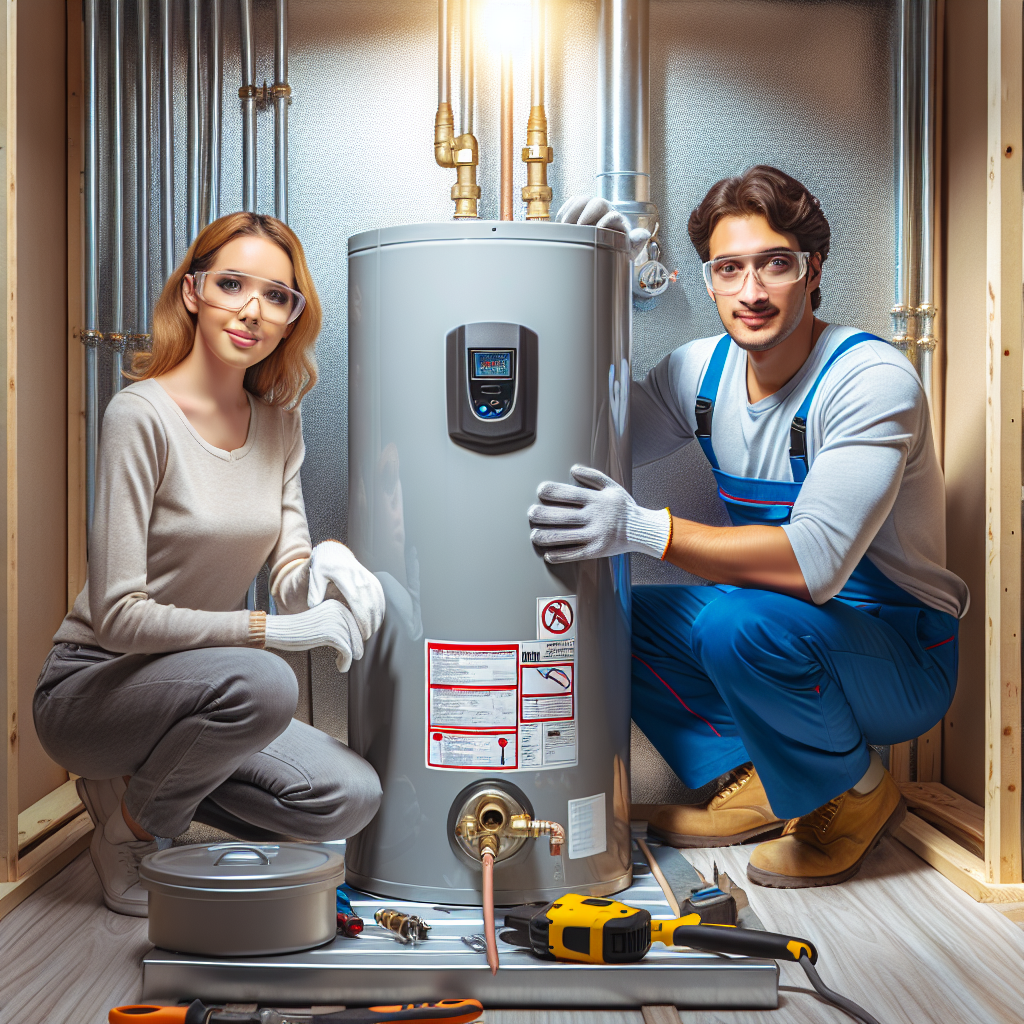
What types of water heaters are available and which one is right for me?
Choosing the right water heater depends on your household needs, budget, and energy preferences. The main types include:
- Conventional Storage Tank: Economical and widely used, it stores and heats water continuously.
- Tankless (On-Demand) Water Heater: Heats water directly without the use of a storage tank, which can be more energy-efficient for smaller households.
- Heat Pump Water Heater: Uses heat from the air or ground, making it more energy-efficient than traditional models.
- Solar Water Heater: Utilizes solar panels, ideal for sunny regions and can significantly reduce energy costs.
- Condensing Water Heater: Best suited for homes that use natural gas as their energy source and need large amounts of hot water.
Consider factors like the size of your household, availability of energy sources, and initial installation costs to determine the best type for your needs.
How do I determine the right size water heater for my home?
The size of your water heater should match the water usage demands of your household. Here’s a quick guide:
- 1-2 people: 30-40 gallons
- 3-4 people: 40-50 gallons
- 5+ people: 50-80 gallons
For tankless water heaters, consider the flow rate (gallons per minute) and ensure it can handle your simultaneous water usage needs.
What tools and materials will I need to install a water heater?
Installing a water heater can be a DIY project if you’re handy, but it requires some specific tools and materials:
- Pipe wrenches
- Screwdrivers
- Plumbing tape
- Flexible hoses
- Soldering equipment (for copper pipes)
- Ventilation materials (for gas heaters)
- Discharge pipe (for T&P valve)
Remember, safety first! Always shut off the power and water supply before starting the installation.
Can I install a water heater myself or should I hire a professional?
While some may choose to install a water heater themselves, it’s often advisable to hire a professional, especially for gas or solar water heaters which require specialized knowledge for safe and efficient installation. A professional installer can ensure that your water heater complies with local codes and regulations, which can also affect your warranty and insurance coverage.
What routine maintenance should I perform on my water heater?
Regular maintenance can extend the life of your water heater and enhance its efficiency. Key tasks include:
- Annually flushing the tank to remove sediment buildup, which can affect performance and efficiency.
- Checking the anode rod every 2-3 years and replacing it if necessary to prevent corrosion.
- Inspecting the temperature and pressure relief valve annually to ensure it’s functioning properly.
- Examining the heating elements (for electric heaters) or the burner (for gas heaters) to ensure they are clean and in good working order.
How do I know when it’s time to replace my water heater?
Water heaters typically have a lifespan of 8-12 years. Signs that you might need a replacement include:
- Inconsistent hot water supply
- Visible rust in water
- Noises from the tank
- Leaks around the base of the heater
Conclusion
Choosing, installing, and maintaining a water heater can seem daunting, but with the right information and resources, it’s a breeze. Whether you’re upgrading to a more energy-efficient model or replacing an old unit, consider your household’s needs and the different types of water heaters available. Remember, proper installation and routine maintenance are key to ensuring your water heater operates efficiently for years to come.
Not sure which water heater is right for your home? Or maybe you need professional advice on installation or maintenance? Head over to the BuildNet website to contact a contractor today for a free quote. Our trusted professionals are ready to help you with all your water heating needs, ensuring safe, efficient, and effective solutions tailored to your home.
Keep those showers warm and your utility bills cool by choosing wisely and maintaining regularly. Here’s to enjoying reliable hot water, without any cold surprises!





